
Customer Retention Management for New and Existing Customers

Segmenting the term clarifies that customer retention management is the combination of two processes – one embedded in the other i.e. customer retention and its management.
Table of Contents
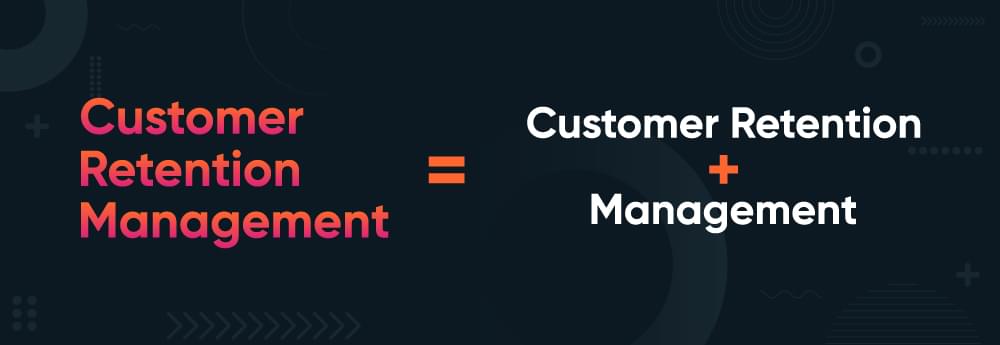
So the question might arise why we need to work on customer retention in the first place when we are already working on attracting the new customers.
The answer is very simple. Existing customers bring more customers and more profit to your business. According to Bain & Company, increasing your customer retention rate by only 5% can bring you a profit between 25% - 95% plus they spend 70% more than the new customers.
According to a study published in the Journal of Consumer Research, 92% of consumers trust recommendations from friends and family over other forms of advertising, which leads to a significant number of new customers being driven by existing ones.
For more business-like minds, better the net negative churn rate of your business, more loyal customers and improved profit margin you get.
Now that we know why retaining a customer is better, let’s move on and understand the customer retention management system.
What is Customer Retention Management
Customer retention is your ability to retain customers overtime whereas customer retention management is a set of strategies, actions and processes that are used to achieve this ability.
Customer Retention Management is when you setup mindful activities and processes within the organization to retain customers. These are the activities and processes that the organization performs to make loyal customers for a long duration of time. In other words, Customer retention management is the key to long term business success and requires you to work on customer feedback, understand user expectations and learn how to act accordingly. It focuses on making customers feel valued and important via direct and conscious actions like swift customer service support, frequent sincere interactions etc.
An effective customer retention management uses customer feedback and customer surveys to get to the heart of what customer needs and desires. This is where customer retention tools like Churnfree come in handy. With Churnfree you can gather customer feedback and view real-time insights in its analytical dashboard. Churnfree segments customers based on their feedback and automates offers to them accordingly.
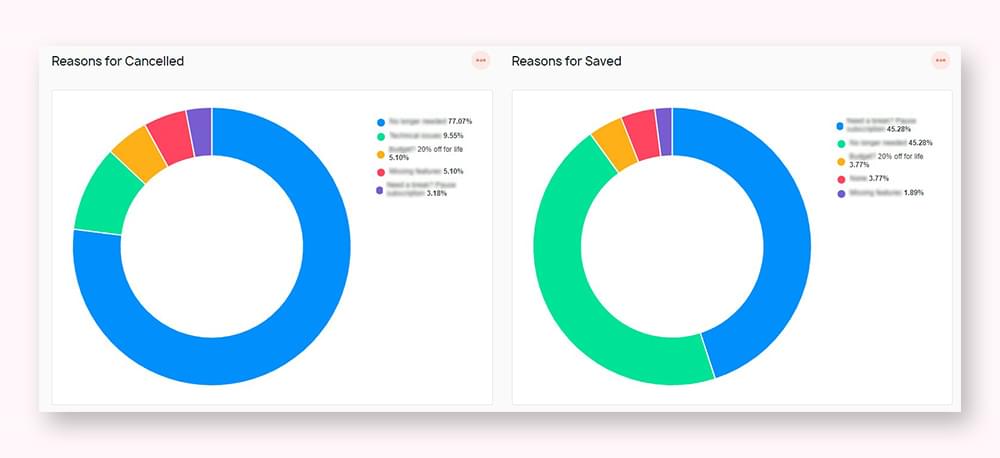
Customer Retention Management in Existing Customers
Let’s look at how to engage existing customers. Growing businesses are quick in listening, learning, product growth and customer retention. They are willing to change and upgrade according to their client and customer needs.
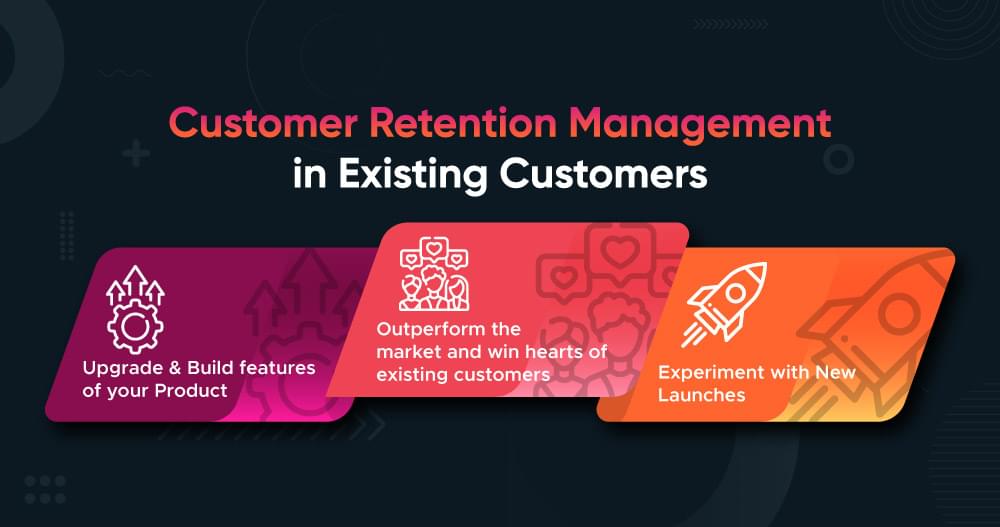
Upgrade & Build features of your Product
Listening to your customer is the key to success. It brings a lot of value to hear them and then make changes in your product or services accordingly.
Receive insights in the form of data from clients – let them tell you what they want in qualitative form. This qualitative client feedback erases all the guesswork and helps build new features in the product to meet user requirements.
Similarly, researching how different users interact with your product can also help you improve it from time to time. Over time, you are likely to know and understand user personas of your existing customers, and it can help improve their experience.
Outperform the market and win hearts of existing customers
In a competitive business world like today, it is wise to keep an eye on your competition – because they definitely are looking at you.
It is crucial to meet your customers’ needs before your competition beats you to it. Nearly 10% of businesses lose customers to the competition when they overlook the importance of user retention management.
If a competitor launches a set of services – they are going to target the needs of your customer base. Keep your figure on your users’ pulse when they ask you for an upgrade otherwise you are likely to have a churn.
Similarly, it is smart to keep an ear out for what the clientele of your competition is saying or is in need of, build and upgrade accordingly.
In short, understand your customer base truly and trust their needs. Always know the market and outperform your competition to meet user requirements. Doing so, you are on the path to gain and retain happy customers.
Experiment with New Launches
Engaging your existing customers by giving them a hint of what’s coming in the new launch can be exciting to them – fake door test is one option. In a fake door test, the user is prompted or shown a feature that doesn’t exist yet. Here’s an example test:
Real-Life Example: Dropbox | Testing Ideas with a Fake Door
When Dropbox was in its early stages, before building the complete product, the founder, Drew Houston, created a video that demonstrated how the service would work. The video was a “fake door” in a sense because it showcased a product that wasn’t fully built yet.
- Execution: The video highlighted the core functionality of Dropbox—seamless file synchronization across devices. Despite the product not being fully operational, the video conveyed the intended user experience.
- Results: The response to the video was overwhelmingly positive, with many users signing up for the service based on the demonstration. This high level of interest validated the demand for the product, which in turn helped secure funding and further development.
- Impact: By using a fake door test in the form of a demo video, Dropbox could validate its idea without fully committing to development costs. The interest generated by the video proved there was a market for the product.
Another Example: Amazon’s “Prime Air”
Amazon’s “Prime Air” drone delivery service was announced with much fanfare and a promotional video, but at the time, the service was far from being operational.
- Execution: Amazon released a video showing how Prime Air would work, giving users an idea of what drone deliveries might look like in the future. However, no such service was yet available.
- Results: The video generated significant media coverage and consumer interest, providing Amazon with valuable feedback on how receptive people were to the concept of drone deliveries.
- Impact: While Prime Air is still in development, the fake door test helped Amazon gauge public interest and fine-tune their approach to this futuristic service.
Interested users are likely to engage and therefore, this engagement activity will bring facts and data showing which of your clientele has the potential to use the new feature or become a power user.
Fake door tests are a cost-effective way to measure interest before investing in full-scale development. By providing a glimpse of a product or feature, companies can gather valuable data on user demand and make informed decisions on whether to proceed with development.
Discussing the new launches in the community platforms is also ideal for customer excitement and engagement – making the community even stronger.
Making new launches more appealing and engaging is a very modern and fruitful approach towards customer retention.
Customer Retention Management in New Customers
Customer retention starts from the newly acquired customers. Finding the right customer or providing the right service increases the customer retention rate. The customer retention strategy benefits from different actions depending on the lifecycle stage of your product and the stage of the customer journey.
Increasing retention among new users include customers at an early-stage and for the new signups of your product. Let’s see what we can offer them.
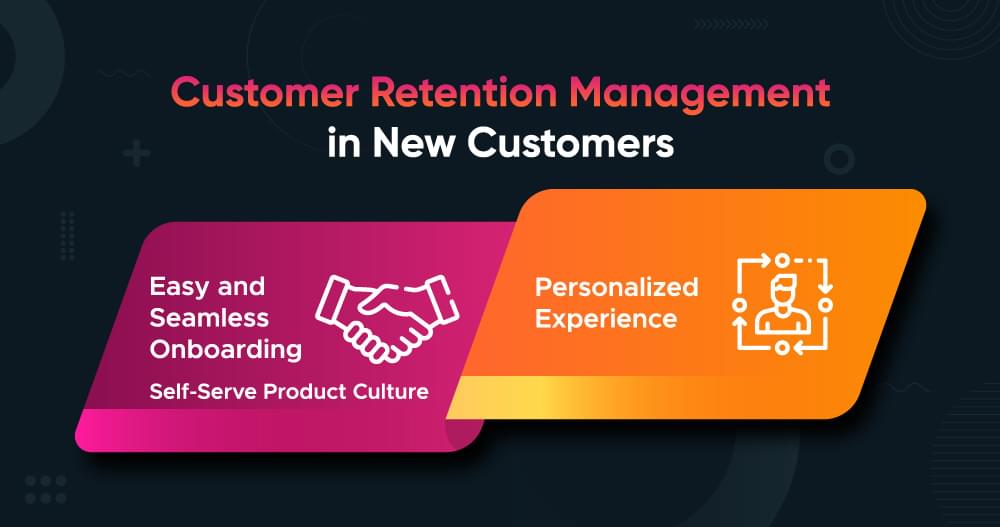
Easy Onboarding
First impression user gets of your product in action is the onboarding experience – make it a big one
Users have worked their way through the flow to find themselves their “aha! Moment”- provide them this moment quickly and perfectly. It is the moment when the customer realizes the real value of your product and how it can help them get their job.
In short, providing an easy and productive onboarding experience is the key for user retention and fighting immediate customer churn. It is more likely to lead to long-term product usage and higher customer satisfaction.
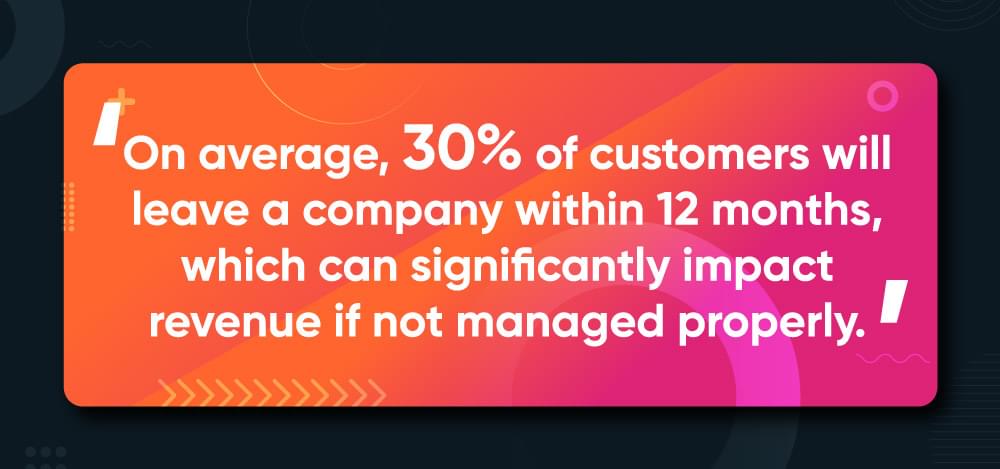
Self-Serve Product Culture
Being a user of a product if you have a question, how quick do you want the answer? Did you say “write there and then” - Exactly what a user expects from your business. Nobody wants to spend hours waiting in line to ask a simple question.
It is way too easy to find the answer online. So to do so improve the productivity of your touchpoints like support pages, help centers, chatbots etc and preferably make them self-serving touchpoints.
Along with self-serving touchpoints, enable users to solve their own issues. This can be done by built-in product features like product walkthroughs and tooltips, FAQs etc. Questions can arise during onboarding or even after years of product usage, it gives users a smoother way to learn about your products and improve the overall user experience if you encourage a self-serve product culture.
Personalized Experience
Provide your new users with a personalized experience. Everyone wants to be treated individually, especially newbies. Therefore, Humanize your brand and customer touchpoints for a better customer experience, user engagement and higher customer retention rate. This is possible through the product’s help center, support pages, product wiki, chatbots, community forums, or other self-serve touchpoints.
Making the new users part of a strong community is another heads-up. Platforms like Facebook groups, Discord etc bring people together to discuss a variety of topics.
Other than creating space for users to communicate, you can aim to get their feedback using in-app surveys. Conducting regular feedback will bring insights from the client’s end and then you can implement the changes they want to see.
4 Steps to Build Strong Retention Management System
The ultimate goal of customer retention management is to avoid customer churn.
To do so, we need an effective system and powerful customer retention strategies to implement this framework. Here are four major key components of implementing customer retention management
Discover Perfect Market and Customer Base
A report by Harvard Business Review shows that new customers can cost between 5 – 25 times more than retaining an existing customer.
However, customer retention efforts of any organization must start by winning the right customer in the first place. Finding new customers might not look a part of the customer retention management process but the fact that finding and acquiring THE RIGHT customers is legit.
Focusing and acquiring the wrong customer is surprisingly an easy mistake. The process of finding the right customer relies on the compatibility of customer needs and features of your product or service. Therefore, it is important to introduce such a product or service to the market that is desirable and is tailored according to customers feedback. Obviously, to get this feedback you need to do market analysis via constant surveys so that your product or service is exactly what is needed and you target THE RIGHT customer as planned.
Build Stronger Customer Retention Practices – set clear goals
As we have already discussed, there are several important reasons why customer retention is a key metric of any business. Effective customer retention is only possible when you set clear customer retention goals in every unit of your business. It means that every unit knows exactly how it is contributing to maintain customer loyalty.
Clear goals help map out the route to successful customer retention. Knowing what you’re trying to achieve is half the battle. Here are some B2B customer journey map examples your can look into.
Customer LifeCycle Management (CLM)
Customer Lifecycle management (CLM) tracks customer journey from start till retention and beyond. The basic benefit of customer lifecycle management is to raise the standard of customer experience well above the market standards. So, a big part of it revolves around performance of touch points you have for the customers.
CLM is a combination of customer journey mapping and mystery shopping activities. CLM creates a system for better customer experience which the customers want to join and stay with it.
Facilitate Customer Business Development
Customer development identifies how you can increase the amount your existing customers are spending with you. It means that along with working to improve your business you are also focused on making your customer more successful in their business by using your product or services. In other words, customer development is another name of Customer Excellence and customer excellence leads to lower churn ratio.
Over to you
We hope that this article helps you manage customer retention effectively. We have some more guides that you might be interested in. Leaving some links below:
How to win back lost customers
What is the most direct cause of customer loyalty.
FAQs
What is the most important factor in customer retention management?
According to my opinion customer satisfaction is the most important aspect in the overall customer retention management. To retain customers, it is very essential to ensure that they are always satisfied with the products, services and the experience they get from the company.
What are the significance and impacts of customer retention management?
Customer retention management increases customer loyalty and free referals. Your loyal customers are most likely to recommend your product to others through word-of-mouth.


